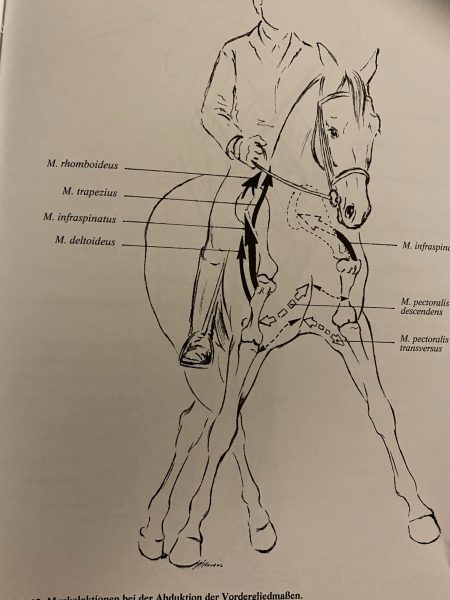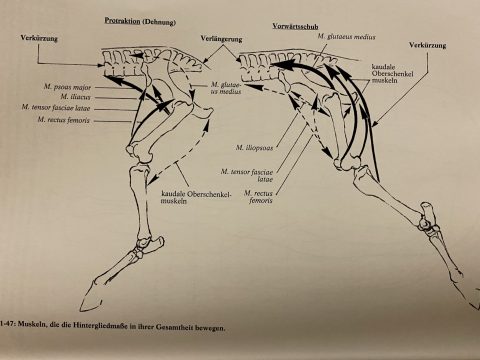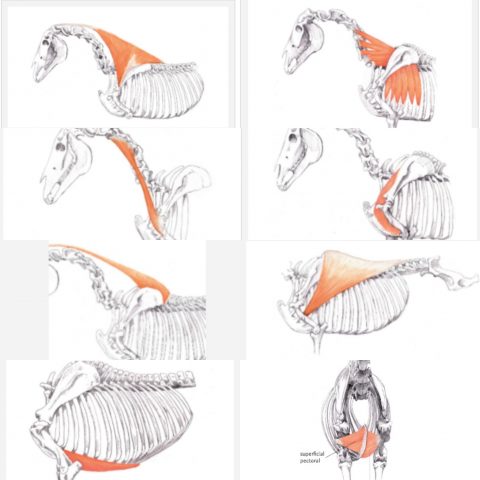Understanding the horses carrying system
Horses as we know are herd animals, designed to be on the move and when all is well going forward is an effortless adventure.
Horses are designed to stay upright effortlessly with the least muscle power possible supported by ligaments and tendons in a pully system.
The horse basically hangs in a sling system at the front and the back, and this system is then supported by four legs. The legs are designed to be shock absorbers.
If everything is working as it should, it is a very well designed unit, and this is why we love riding them as they move majestically with comfortable paces over open ground.
Let’s have a closer look at the carrying system.
This is important to understand and look at because if we don’t we won’t notice that when our horse goes lame, as the leg is the weakest link, we will subsequently have a number of related issues to contend with.
Maintaining the correct function of the system and the development of muscle enables you to ride your horse without doing any damage. Horses work in a horizontal balance from poll to tail in spinal alignment, which is effectively two slings with a hanging basket in the middle supported by four pillars.
There are four parts to this
- the thoracic sling which is characterised by the shoulder, wither and neck in the front,
- the pelvic girdle which is in the back where our horse’s engine sits,
- the basket where the organs and ribcage are in between the suspension bridge and
- the legs which are the four pillars.
A combination of these working together results in horizontal balance and vertical balance, so it is easy to see if these don’t work in tandem and we then ride our domesticated horses, they are going to be out of balance.
To move forward you need to create lift, but to get lift you need to slow it down.
I like to compare this to a small child learning how to walk, as before you know it they are running, then they topple over, then they get their balance and then they slow down.
This is what we see with our horses too.
If we want to access our horse’s engine from behind we need to be able to open the throttle in the front, meaning the wither is lifted and supported by the upper neck muscles as well as engaging the muscles inside the horse.
These show up as a solid neck, and no dip in front of the wither or hollow behind the wither.
The horse needs to be able to lift the back and engage its core with its head at the poll being the highest point.
I regularly see horses that are not moving forward freely and are leaning on the bit, they have compromised or weak thoracic sling muscles.
The rider holds the rein and feels slightly tipped forward with pressure on the toes into the stirrup, while the horse is leaning over the shoulders, down and forward into the shoulder blades with its front feet in a backwards position.
When I see this it shows me that both horse and rider basically in a locked-down position and are braced.
Both are having difficulty in breathing properly and both sense a real fear of losing control, none of which is what we are striving for.
In this scenario, there is no room for the hind legs to come forward as the roadblock is in the front, and it is damaging for the horse’s lower neck, shoulder and elbow to travel like this.
To compensate the horse often has its hind legs behind the body which in turn overstretches the stifle and hocks, and you can often see them twisting a hindleg when they turn.
Another consequence of this is that they also place the hind legs in a wider stand past the body to give them stability, but again this compromises the hips, stifle and hocks and makes the back drop with the ribcage hanging on the shoulders.
When you look at horses from the side who are moving like this, their chest has slightly dropped and is in front and they end up with very weak muscles in the chest (man boobs) and if you look at them from the front the chest looks narrow and the front legs look closer together on the top, wider at the base.
These horses often become sluggish and drop weight and their ribs start to show, yet they appear to have a wide grass belly, and are typically very well cared for, much loved.
We need to work out what is going on and resolve it.
Working with the horse and bringing it into a better balance.
 -Picture 1
-Picture 1
front lifted engaged open chest
(thoracic sling )

-Picture 2
hind end muscle group in the movement (Pelvic Girdle)
Both pictures are from the book Jean-Marie Denoix Physiotherapy und Massage bei Pferden

-Picture 3
The muscles involved in the thoracic sling
From the book
horse movement: structure, function and rehabilitation by Gail Williams.

